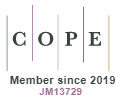Defining The Identity of Technocentric Transformations In An Urban Edge – A Case of Kazhakuttom, Trivandrum
DOI:
https://doi.org/10.15415/cs.2016.41005Keywords:
Technocentric Development, Technocentric Transformations, Urban Edge, Urban IdentityAbstract
Technocentric developments often result in creating a socio-spatial duality in different contexts, forming a place identity with contesting nature of the global and local settlements. The location of technocentric campuses in the urban periphery results in a haphazard development with little response to the context, also resulting in social strife and generating possibilities of marginalisation and gentriication of the local communities in near future. This will affect the urban life due to a discontinuity in the urban realm. The current transformations include functional change of existing residential units into mixed-use commercial and lodging facilities and, conversion of vacant plots into high density residential and commercial functions.
The transformations seen at the site of the case study also include the conversion of the earlier dead bypass stretch into a highly active corridor with restaurants, informal eateries, and hang out areas targeting the techie population which adds to the changing urban identity of Kazhakuttom. This paper attempts to envision the future development and urban identity of Kazhakuttom as the new economic district of Trivandrum city as a favourable work-live-entertainment environment with support facilities, while also incorporating local aspirations to ensure social and spatial continuity.
The methodology involved a detailed macro and micro level primary study and analysis of Kazhakuttom so as to identify the issues. The methodology included correlating the primary study with literature study on concepts and theories of identity, glocalization, and hybridization. The design cues from related technocentric contexts in Silicon Valley, Gurgaon and Bengaluru allowed developmemnt of design strategies for integrating the technocentric campuses with the local context and culture of the place.
Downloads
References
[2] BREAKWELL, G. M. (1986) Coping with Threatened Identities. London: Metheun.
[3] Census data, Trivandrum District Collectorate, Election data, 2011.
[4] CORREA, C., (1983) Quest for Identity. In: Proceedings of the Seminar on Architecture and Identity, Kuala Lumpur, 198v3. Singapore: Concept Media/Aga Khan Award for Architecture, pp. 10–13.
[5] FRAMPTON. K. (1983) Towards a Critical Regionalism: Six points for an Architecture of Resistance. In: FOSTER, H. (ed.) The Anti-Aesthetic: Essays on Postmodern Culture. 1st ed. Seattle: Bay Press, pp. 16–30.
[6] FRIEDRICH. S. (1998) Spatial Aspects of Cultural Identity and Social Segregation. In: TAN2 Conference Report on Cultural Identity and Spatial Segregation, 5-8 Nov. 1998.
[7] GOVERNMENT OF KERALA. DEPARTMENT OF TOWN AND COUNTRY PLANNING (2012) Thiruvananthapuram Master Plan (Draft). Thiruvanthapuram: Thiruvanthapuram Corporation.
[8] HARVEY, D. (1990) Chapter-17: Time-space compression and the postmodern condition. In: HARVEY, D. The Condition of Postmodernity – An Enquiry into the Origins of Cultural Change. Oxford: Blackwell Publishers, pp. 284–307.
[9] KUDUG, D.C., CEBI, D.P. (2014) Exploring Emerging Identities and Generation of Hybrid Urban Forms in the City of Doha In: Composite Cities – Proceedings of the European Symposium on Research in Architecture and Urban Design, Istanbul, November 12-14, 2014. Istanbul Technical University, pp. 042:01-15.
[10] LYNCH, K. (1960) The Image of the City. Cambridge, USA: The MIT Press.
[11] NORBERG-SCHULZ, C. (1979) Genius Loci: Towards a Phenomenology of Architecture. New York: Rizzoli.
[12] PROSHANSKY, H.M and FABIAN, A.K. (1987) Chapter-2: The Development of Place Identity in the Child. In: DAVID, T. G. and WEINSTEIN, C. S. (eds.) Spaces for Children - The Built Environment and Child Development. New York: Plenum Press, pp. 21–40.
[13] ROBERTSON. R. (1992) Globalization: Social Ttheory and Global Culture. London: Sage Publications.
[14] SAASEN, S. (1996) Whose city Is It? Globalization and the Formation of New Claims. Public Culture, 8 (2), pp. 205–223. doi:10.1215/08992363-8-2-205
[15] STALLMEYER,J.C. (2011) Building Bangalore Architecture and Urban Transformation in India’s Silicon Valley. New York: Routledge.
[16] SWYNGEDOUW. E. (1997) Neither global nor Local: ‘Glocalization’ and the Politics of Scale. In: COX, K. (ed.) Spaces of Globalisation: Reasserting the Power of the Local. London: The Guilford Press, pp.137–166.
[17] TAJFEL. H. (ed.) (1982) Social Identity and Intergroup Relations (European Studies in Social Psychology). Cambridge: Cambridge University Press.
[18] TECHNOPARK (2015) Technopark Phase III. [Online] Technopark: Harmony @ Work. Available from: http://www.technopark.org. [Accessed on: 20/06/2015].
[19] TWIGGER-ROSS, C.L. and UZZEL, D.L. (1996) Place and Identity Process. Journal of Environmental Psychology, 16 (3), pp. 205-220.
[20] TWIGGER-ROSS, C.L., BONAIUTO, M. and BREAKWELL, G. (2003), Identity Theories and Environmental Psychology. In: BONNES, M., LEE, T., and BONAIUTO, M. (eds.) Psychological Theories for Environmental Issues. Aldershot, England: Ashgate Publishing, pp.203–233.
Downloads
Published
Issue
Section
License
Articles in the Journal of Creative Space (Creat. Sp.) by Chitkara University Publications are Open Access articles that are published with licensed under a Creative Commons Attribution- CC-BY 4.0 International License. Based on a work at https://cs.chitkara.edu.in. This license permits one to use, remix, tweak and reproduction in any medium, even commercially provided one give credit for the original creation.
View Legal Code of the above-mentioned license, https://creativecommons.org/licenses/by/4.0/legalcode
View Licence Deed here https://creativecommons.org/licenses/by/4.0/
 |
Journal of Creative Space by Chitkara University Publications is licensed under a Creative Commons Attribution 4.0 International License. Based on a work at https://cs.chitkara.edu.in/ |







